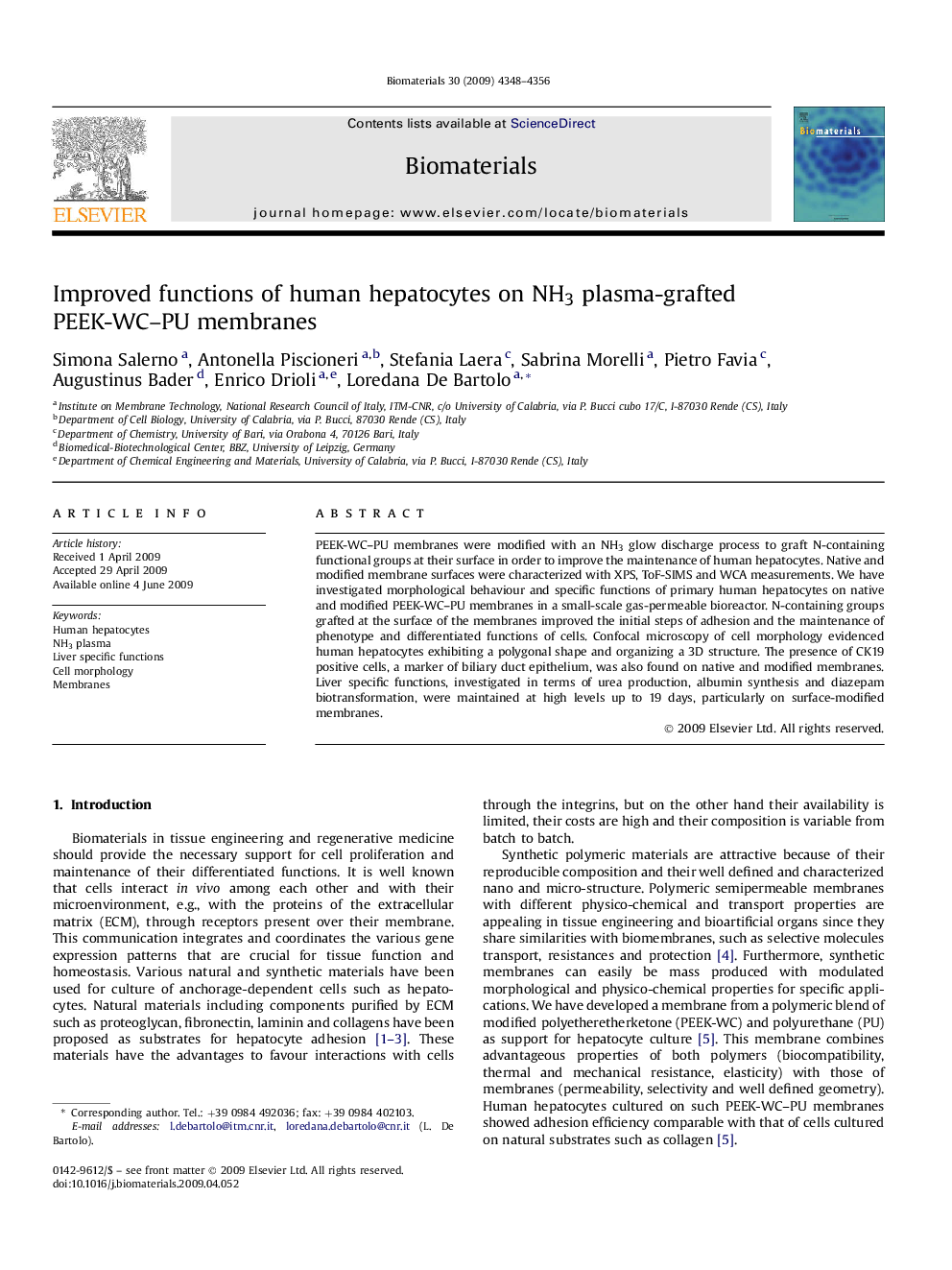| Article ID | Journal | Published Year | Pages | File Type |
|---|---|---|---|---|
| 10230033 | Biomaterials | 2009 | 9 Pages |
Abstract
PEEK-WC-PU membranes were modified with an NH3 glow discharge process to graft N-containing functional groups at their surface in order to improve the maintenance of human hepatocytes. Native and modified membrane surfaces were characterized with XPS, ToF-SIMS and WCA measurements. We have investigated morphological behaviour and specific functions of primary human hepatocytes on native and modified PEEK-WC-PU membranes in a small-scale gas-permeable bioreactor. N-containing groups grafted at the surface of the membranes improved the initial steps of adhesion and the maintenance of phenotype and differentiated functions of cells. Confocal microscopy of cell morphology evidenced human hepatocytes exhibiting a polygonal shape and organizing a 3D structure. The presence of CK19 positive cells, a marker of biliary duct epithelium, was also found on native and modified membranes. Liver specific functions, investigated in terms of urea production, albumin synthesis and diazepam biotransformation, were maintained at high levels up to 19 days, particularly on surface-modified membranes.
Related Topics
Physical Sciences and Engineering
Chemical Engineering
Bioengineering
Authors
Simona Salerno, Antonella Piscioneri, Stefania Laera, Sabrina Morelli, Pietro Favia, Augustinus Bader, Enrico Drioli, Loredana De Bartolo,
